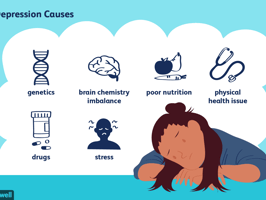←Back to resources Not quite a newsletter. Not quite a dataset. Not quite a roundup. Something...
Should I use a media monitoring platform or BUTTER?
←Back to resources
There are some important differences between the two
Media monitoring platforms and Butter are great tools for those looking to track content relevant to their company or industry. LexisNexis Newsdesk, a media monitoring platform, allows its customers to track news and analytics about their company, brand and competitors. Butter is a proactive research engine that helps users track peer-reviewed research, patents, trademarks, stocks, company announcements, clinical trials, and more. So both services keep their users informed of the latest developments within its industry by tracking relevant information as it emerges. However, Butter differs from a media monitoring platform in its purpose and the quality and type of content it provides.
Purpose
Media monitoring mainly allows PR departments to “listen in” on target audience sentiment in order to track what is being said about the company brand.
It focuses on collecting and responding to customer opinions at an individual level and group level. Media monitoring helps companies locate a target audience, respond to feedback, better understand their customers, and improve its overall marketing strategy. One small example of media monitoring is when Jell-O experienced negative user feedback in 2011, they were able to quickly respond by releasing coupons for their products.
On the other hand, Butter helps scientists, researchers, and other professionals stay up-to-date on the latest research and developments in their field of study or industry. While media monitoring is a tool for marketing and PR strategists, Butter is a research tool used for research, business development and business intelligence.
Practical differences
Media monitoring platforms provide alerts on the latest news, social media, print, TV and radio coverage, alerting users to all relevant media, accurate or not. Meanwhile, Butter focuses on emerging research, patents, trademarks, and SEC filings.
Let’s say a new patent has been issued for a product in a company’s industry. The media monitoring platform would pick it up after a news article had been written about the patent. On the other hand, Butter, which directly monitors the government’s database of patents, alerts its users and publishes a research brief about the patent within a few days of the patent’s official filing.
Butter also ensures high-quality content through its strict elimination criteria--a feature most media monitoring platforms do not provide. Butter’s algorithms gather content from our vetted sources and then eliminate all low-quality content, such as articles with incomplete or inaccurate data. All that remains on the Butter platform is valuable content sought after by scientists and research and business professionals.
A final and important distinction is that media monitoring platforms do not create their own original content, instead aggregating a variety of sources. NewsRx produces its own content in the form of individual news briefs and daily and weekly datasets. This original content allows Butter’s users to efficiently research their sector or stay updated in their industry.
Which tool you choose really depends on what you're looking for in your platform. If you want to track all the news and social media that tags a certain topic, and look for key marketing trends, a media monitoring platform would be better. But if you want the ability to conduct scientific and corporate research, and receive alerts about the world of content that doesn't make the news, Butter's your best bet.
Read more: Your Guide to Content Aggregation, Content Curation, and NewsRx

.jpg?width=50&name=DSC_0028%20(1).jpg)


